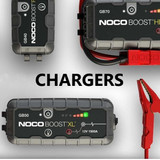Maintaining Building Emergency Systems
In an emergency, it’s imperative that the lighted exit signs work and people are able to exit the building safely. This means that all exit and emergency lights, as well as all alarm systems, have to be properly maintained to ensure they meet all federal and state requirements. In many areas, these requirements include provisions requiring emergency lights and exit signs to be battery powered and use different circuitry.
While there are a lot of statutes telling you exactly what you are required to do, there are fewer instructions telling you how to do it. Here we’ll talk about different options to help you maintain your emergency system.
Which battery is best for you?
The two main types of batteries used to power exits signs and emergency lights are nickel-cadmium batteries and sealed lead-acid batteries. Let’s break down the pros and cons of both.
Nickel-Cadmium
Pros
- Smaller in size – they can fit in tight spaces
- Turn any direction – they don’t have to stay in an upright position
- Light weight – less weight means they require less installation support
Cons
- Can cost more – in the world of rechargeable batteries, they are not always the cheapest option
- Affected by extreme temperatures – extreme temperatures will decrease the battery life and functionality
- Memory – this means that if the battery is not fully charged in the beginning it will never be fully charged.
Lead-Acid
Pros
- Most affordable option – lead-acid batteries are still extremely popular for this reason
- Less affected by extreme temperatures
Cons
- Heavier – lead-acid batteries require additional support when installing
- Must be upright – because of their chemistry and construction, these batteries typically need specific orientation
- Larger in size – their size limits their ease of installation and storage
- Can not be deep cycled – completely discharging the battery will damage it
Pro-Tip: If you are looking to replace batteries of equipment that is already there as opposed to choosing new, you need to stick with the batteries that the equipment was designed for originally.
It’s important to know: sometimes if you try to change battery type, it could cause issues. If you don’t like the battery type that your equipment uses, you may have to get new equipment that uses the battery of your choice. Typically, lead-acid batteries are used when powering emergency lights and nickel-cadmium batteries are used to power the lighted emergency exits.
How To Maintain The Emergency System In Your Building
All state and federal statutes require routine maintenance and testing of all emergency alarm and lighting systems. Most look to a 30 second and 90-minute test. During these tests, if your lights fail to illuminate it’s most likely time to replace the batteries.
This is also a good time to inspect the wiring and the condition of the housing to make sure everything is in good working order. If you discover that you are having to replace the batteries more often than you should, there could be an issue with the unit that is causing the battery to discharge faster than it would otherwise.
Dust, dirt and even moisture can increase a batteries rate of discharge so it’s always a good idea to make sure the battery and the unit are cleaned during routine maintenance.
Maintaining these emergency units are really easy once you understand how they work. If you need help understanding, that’s what our team is for. As long as you keep up the maintenance schedule your systems should always pass inspection.
POPULAR ARTICLES
-
Get Ready for Spring: Golf-Cart Battery Care and Charging Tips
Jan 23, 2024Everyone’s guilty of some mistakes with their batteries. The results of these well-intentioned actio
-
Pocket Power: Best Features of Lithium-Ion Battery Boosters
Jan 23, 2024Every device today seems to have a battery. That statement isn’t an exaggeration either. In fact, it
-
Where You Can Drive Golf Carts
Jan 23, 2024It’s the peak of summer vacation time and everyone is wanting to take a golf cart and hit the roads



